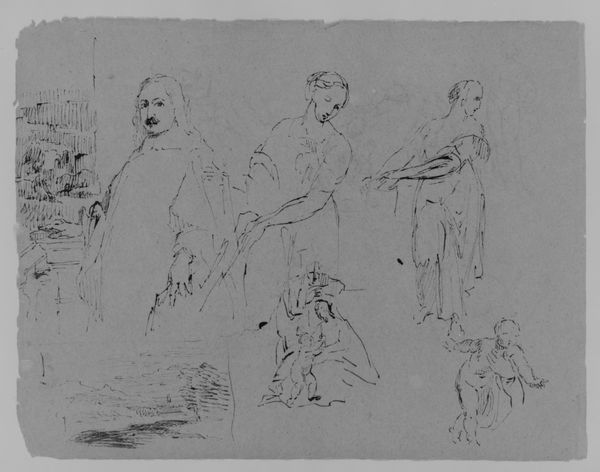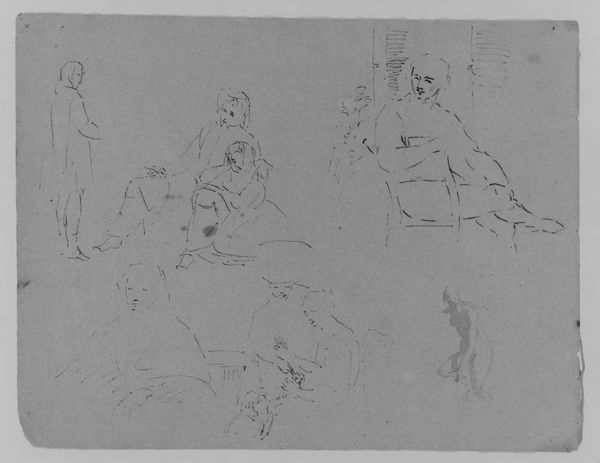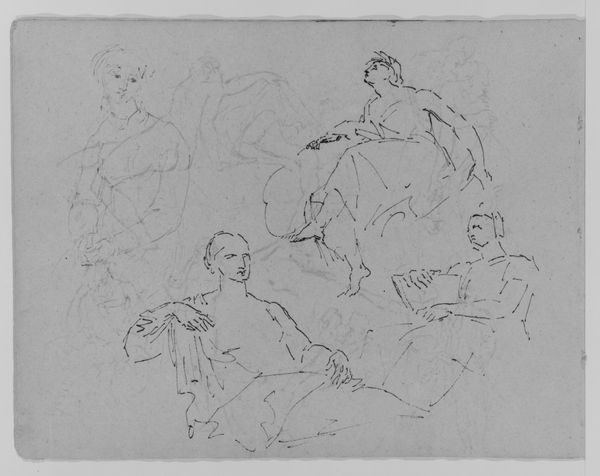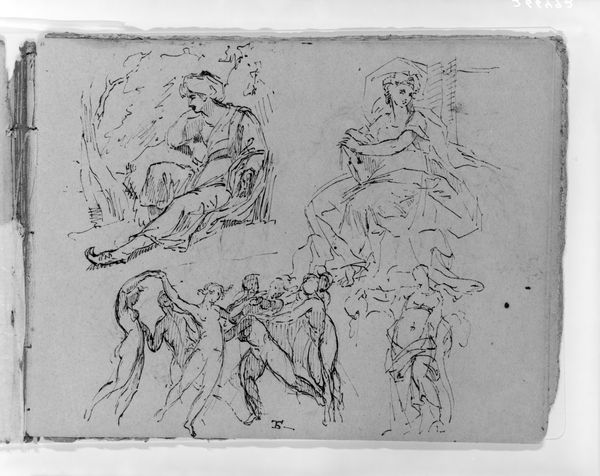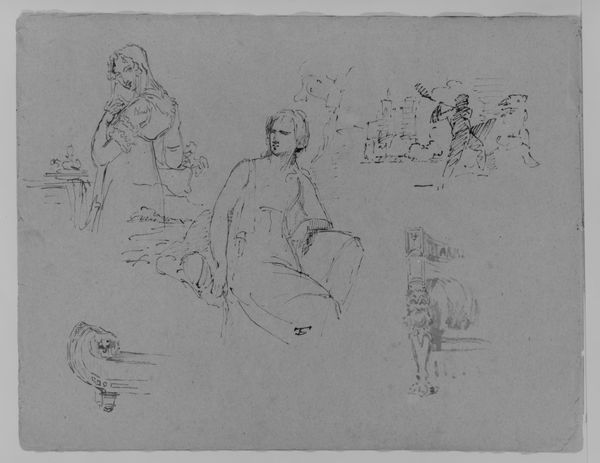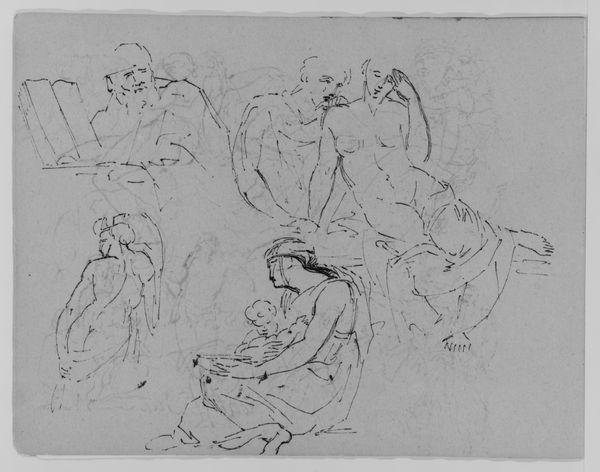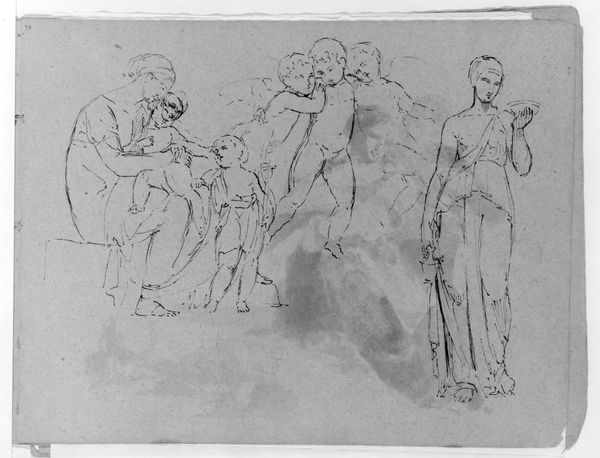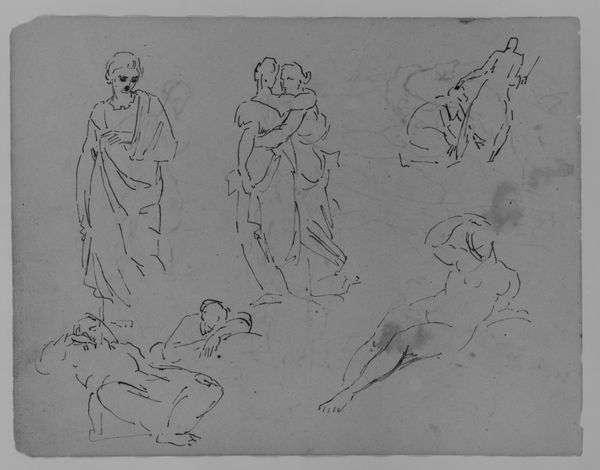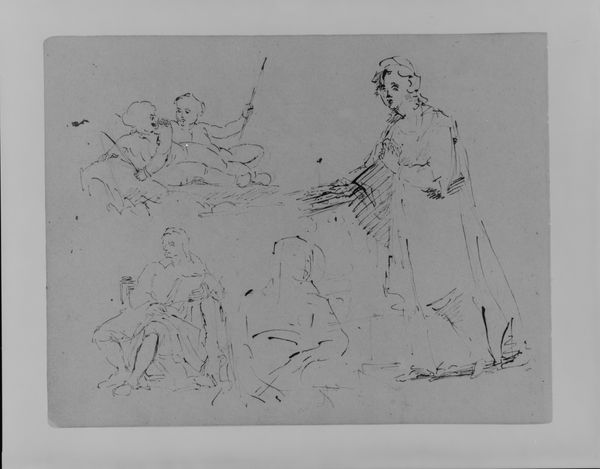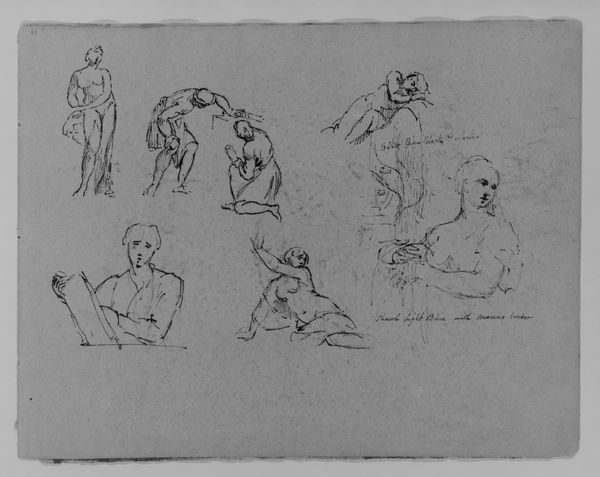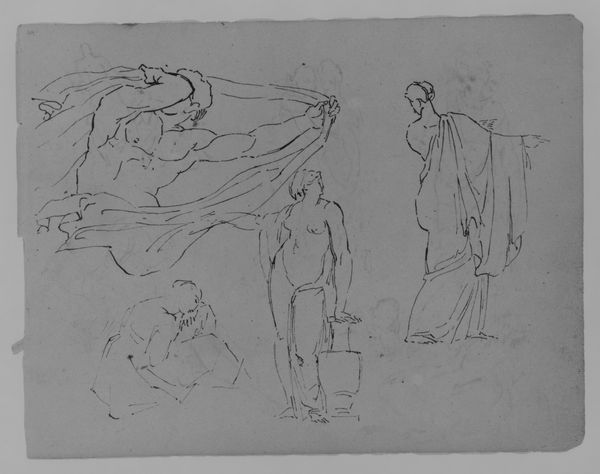
drawing, ink, pen
#
portrait
#
drawing
#
pencil sketch
#
figuration
#
ink
#
pen-ink sketch
#
pen
#
academic-art
Dimensions: 9 x 11 1/2 in. (22.9 x 29.2 cm)
Copyright: Public Domain
Editor: So, here we have Thomas Sully's "Four Figure Studies" from around 1810 to 1820. It's a pen and ink drawing, showcasing several figures in various poses. I'm immediately drawn to the sense of movement captured with such economy of line. What can you tell us about how this work fits into its time? Curator: Well, Sully's sketch offers insight into the academic art world of the early 19th century, where mastering the human form was paramount. Consider the emphasis on idealized anatomy and classical poses – remnants of Neoclassical ideals promoted by art academies. However, unlike the highly finished Salon paintings, this is an informal glimpse into artistic training. Think of this sheet as a kind of visual shorthand for aspiring artists. Who had access to such training and under what conditions? Editor: So it’s less about creating a finished piece and more about…practice? A kind of artistic exercise? But did such studies have public value at that time? Curator: Absolutely. Drawings like these were tools for the artist and sources of inspiration. They reveal how artists thought and worked and circulated amongst artistic circles and patronage networks, revealing the otherwise hidden processes behind more formal artworks. Moreover, understanding the social context of the art world—the patronage system, the art market—sheds light on who commissioned and collected such works, thus influencing what art was made and valued. Can we deduce anything about the patron and audience from such drawings? Editor: I guess it’s interesting to think that something so seemingly private as a sketchbook page could have a public role, even indirectly. Seeing this in the Met changes how I thought about art production at the time. Curator: Precisely. It prompts us to reconsider how the art world functioned, not just through grand narratives of masterpieces, but also through the less visible everyday practices and social networks that sustained it. I think looking at these pieces prompts questions on how we attribute value to something from the past, when considering how value is tied to institutionalization.
Comments
No comments
Be the first to comment and join the conversation on the ultimate creative platform.
